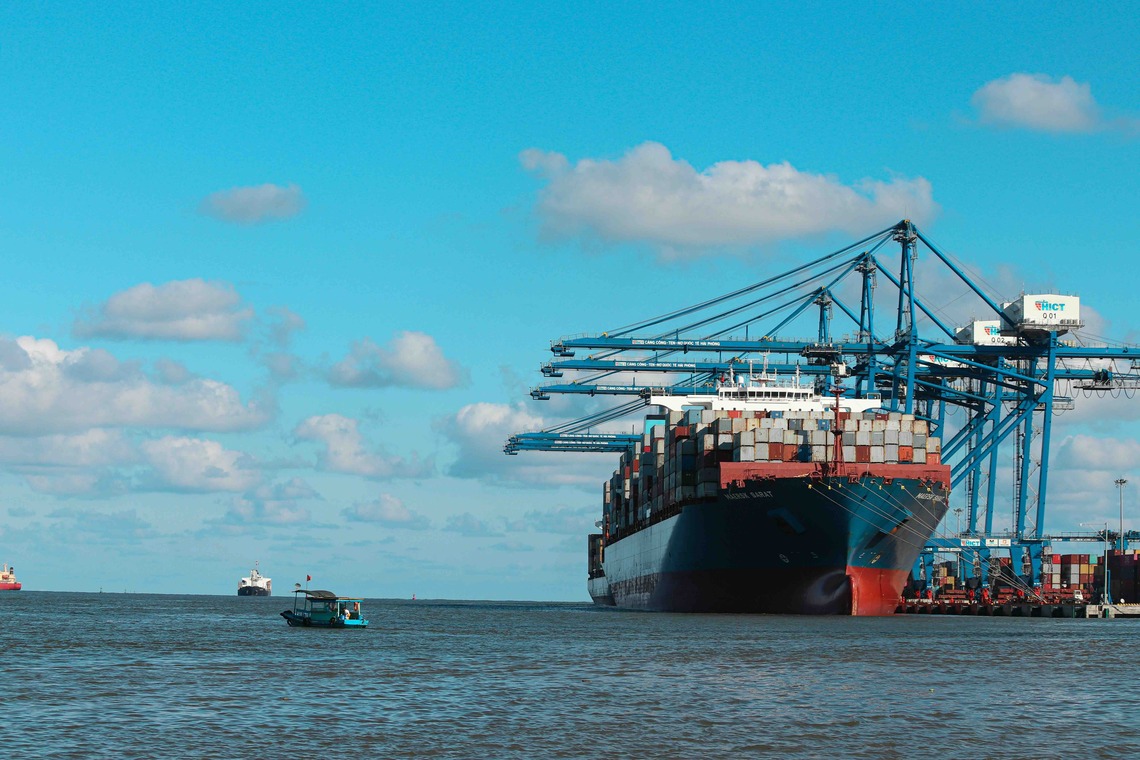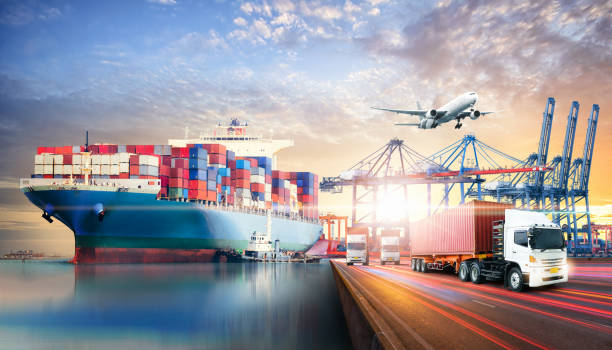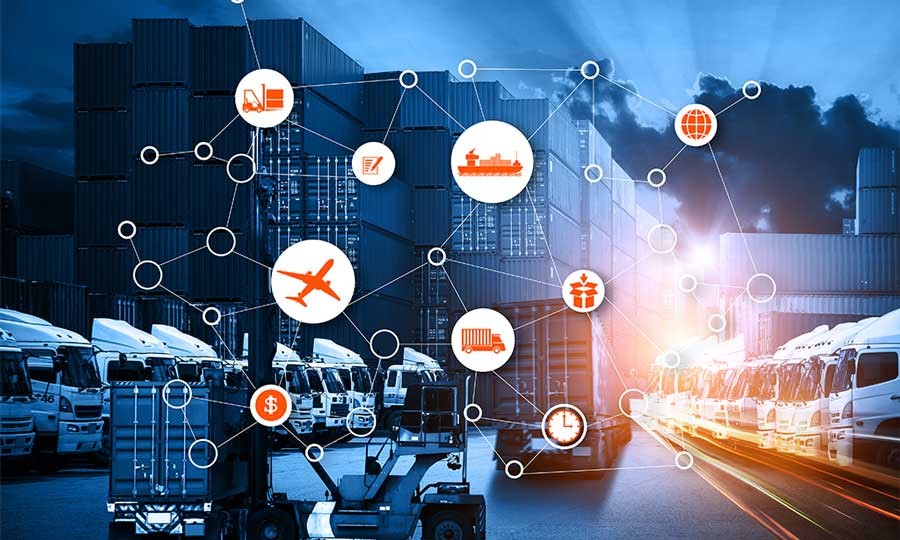As sustainability becomes essential in modern supply chains, zero-waste logistics is emerging as a powerful approach to reduce waste and create a circular economy. By focusing on every stage of a product’s lifecycle, from production to disposal, zero-waste logistics transforms supply chains, minimizing waste and keeping resources in circulation. This article explores the importance of zero-waste logistics, key practices involved, and the benefits of adopting this model.
随着可持续性在现代供应链中变得至关重要,零废弃物流正在成为一种强有力的方法,以减少浪费并创造循环经济。通过关注产品生命周期的每个阶段,从生产到处置,零废弃物流改变了供应链,最大限度地减少废弃物并保持资源的循环利用。本文探讨了零废弃物流的重要性、关键实践以及采用此模型的益处。
Why Zero-Waste Logistics Matters
The transition from a traditional “take-make-dispose” supply chain model to a circular one is essential for companies that aim to align with modern sustainability standards. By reusing and recycling resources, zero-waste logistics keeps materials in use longer, reducing the demand for new raw materials. This approach benefits companies in three main ways:
1. Meeting Sustainability Goals: As environmental responsibility becomes central to corporate values, companies are pressured to reduce waste, emissions, and overall resource consumption. Zero-waste logistics offers a structured method to meet these goals by creating closed-loop systems that reduce the need for extraction of raw materials and minimize pollution.
2. Cost Reduction: Waste management and disposal are costly, and reducing waste can lead to significant savings. Implementing zero-waste practices, such as recycling packaging or reusing returned goods, can lower operational costs, making it a financially sound choice.
3. Competitive Advantage: With consumers increasingly favoring sustainable brands, adopting zero-waste logistics aligns companies with consumer expectations. It also prepares companies for stricter regulations on sustainability, especially in regions like the EU, where companies are held to high environmental standards.
为什么零废弃物流很重要
从传统的“取-制造-丢弃”供应链模型向循环模式的转变,对于希望符合现代可持续性标准的公司至关重要。通过重复利用和回收资源,零废弃物流延长了材料的使用时间,减少了对新原材料的需求。这种方法为公司带来了三个主要好处:
1. 实现可持续发展目标: 随着环境责任成为企业价值的核心,公司面临减少浪费、排放和整体资源消耗的压力。零废弃物流提供了一种结构化的方法来实现这些目标,通过创建闭环系统,减少对原材料的提取需求,并将污染降至最低。
2. 成本降低: 废弃物管理和处置成本昂贵,减少废弃物可以带来显著的节约。实施零废弃做法,例如回收包装或重复使用退货物品,可以降低运营成本,使其成为一种经济上合理的选择。
3. 竞争优势:随着消费者越来越倾向于支持可持续品牌,采用零废弃物流使公司与消费者的期望保持一致。这也使公司为更严格的可持续性法规做好准备,特别是在欧盟等对环境要求较高的地区。
Key Practices in Zero-Waste Logistics
Achieving zero-waste logistics requires a multifaceted approach involving several key practices:
1. Reverse Logistics and Closed-Loop Systems
Reverse logistics involves moving products, materials, and packaging back through the supply chain to be repaired, reused, recycled, or refurbished. This closed-loop model helps eliminate waste by keeping materials within the system rather than discarding them.
– Maersk and DB Schenker are leaders in implementing closed-loop systems. Maersk has made substantial strides in reducing ocean pollution and CO₂ emissions by adopting reverse logistics as part of its zero-carbon 2050 goal. The company uses its vessels and logistics networks to bring goods and materials back for recycling and reuse, tackling waste directly.
– DB Schenker has introduced “Eco Warehouses,” which incorporate energy-efficient designs and sustainable practices. These facilities manage returned goods, minimizing environmental impact through energy savings and recycling.
零废弃物流的关键实践
实现零废弃物流需要多方面的方法,涉及多个关键实践:
1. 逆向物流和闭环系统
逆向物流涉及将产品、材料和包装重新通过供应链返回,以进行维修、重复利用、回收或翻新。此闭环模式有助于通过保持材料在系统内而不是被丢弃,从而消除废弃物。
– 马士基和德铁信可是实施闭环系统的领导者。马士基通过采用逆向物流作为其零碳2050目标的一部分,在减少海洋污染和CO₂排放方面取得了重大进展。该公司利用其船只和物流网络,将货物和材料带回进行回收和再利用,从而直接应对浪费问题。
– 德铁信可引入了“生态仓库”,结合了节能设计和可持续实践。这些设施管理退货货物,通过节能和回收来减少环境影响。
2. Technology Integration
Advanced technologies like IoT, artificial intelligence (AI), and data analytics play a crucial role in enhancing zero-waste logistics. These tools improve real-time tracking, reduce waste, and optimize logistics processes.
– IoT Sensors: These devices provide real-time data on inventory, product condition, and location. For instance, Maersk utilizes IoT sensors in cold chain logistics, monitoring temperature-sensitive goods to prevent spoilage. By ensuring optimal storage and transport conditions, Maersk minimizes waste and improves the quality of delivery.
– AI-Driven Analytics: AI is critical for managing logistics data. It can optimize shipping routes, reduce empty return trips, and streamline inventory management, which prevents overproduction and excessive storage costs. DB Schenker is also testing autonomous and electric vehicles, which help reduce emissions in last-mile deliveries and increase operational efficiency.
2. 技术集成
物联网(IoT)、人工智能(AI)和数据分析等先进技术在增强零废弃物流方面发挥着至关重要的作用。这些工具提高了实时追踪、减少废弃物和优化物流流程的效率。
– 物联网传感器:这些设备提供有关库存、产品状况和位置的实时数据。例如,马士基在冷链物流中使用物联网传感器,监控温度敏感货物以防止变质。通过确保最佳存储和运输条件,马士基最大限度地减少了浪费并提高了交付质量。
– AI驱动的分析:人工智能对于管理物流数据至关重要。它可以优化运输路线,减少空载返程,并简化库存管理,从而防止生产过剩和储存成本过高。德铁信可还在测试自动驾驶和电动车辆,以帮助减少最后一公里的排放并提高运营效率。
3. Sustainable Packaging Solutions
Traditional single-use packaging is one of the largest contributors to waste in logistics. Companies dedicated to zero-waste logistics are now turning to reusable, biodegradable, or minimalistic packaging solutions.
– Eco-Friendly Packaging: Maersk and DB Schenker use recyclable and compostable materials in packaging, aligning with their broader environmental objectives. Using sustainable materials reduces waste, appeals to eco-conscious consumers, and complies with environmental standards.
– Minimalist Design: Companies are also opting for minimalist packaging to reduce material use. This approach reduces not only waste but also transportation costs by minimizing weight and volume.
3. 可持续包装解决方案
传统的一次性包装是物流中最大的浪费来源之一。致力于零废弃物流的公司现在转向可重复使用的、生物降解的或简约的包装解决方案。
– 环保包装:马士基和德铁信可在包装中使用可回收和可堆肥材料,与其更广泛的环境目标保持一致。使用可持续材料不仅减少了废弃物,还吸引了环保意识强的消费者,并符合环境标准。
– 简约设计:公司还选择简约包装以减少材料使用。这种方法不仅减少了废弃物,还通过减轻重量和体积来降低运输成本。

Extending Zero-Waste Practices Across Supply Chains
While the focus of zero-waste logistics is often on packaging and shipping, extending these principles across the supply chain can maximize sustainability. Many companies are beginning to look at waste reduction in manufacturing, procurement, and warehousing.
– Sustainable Sourcing: Selecting suppliers that adhere to sustainable practices can significantly reduce waste. Many companies are choosing partners that use eco-friendly materials, have energy-efficient facilities, or adhere to zero-waste policies.
– Eco-Friendly Warehousing: Warehouses consume large amounts of energy. Using renewable energy sources, recycling materials within the warehouse, and incorporating green building designs help reduce the carbon footprint. For example, Amazon has pledged to build solar installations on many of its warehouses, aiming to power 100% of its global operations with renewable energy by 2030.
– Closed-Loop Manufacturing: Some manufacturers are adopting closed-loop systems, where production waste is reintroduced into the supply chain. This could involve recycling scraps from one product line into raw materials for another or using waste energy for heating within the facility.
将零废弃实践扩展至整个供应链
虽然零废弃物流的重点通常在于包装和运输,但将这些原则扩展至整个供应链可以最大化可持续性。许多公司开始在制造、采购和仓储中寻找减少废弃物的方法。
– 可持续采购:选择遵守可持续实践的供应商可以显著减少废弃物。许多公司正在选择使用环保材料、具有节能设施或遵循零废弃政策的合作伙伴。
– 环保仓储:仓库消耗大量能源。使用可再生能源、在仓库内回收材料以及采用绿色建筑设计有助于减少碳足迹。例如,亚马逊承诺在许多仓库建立太阳能装置,目标是在2030年为其全球运营提供100%的可再生能源。
– 闭环制造:一些制造商正在采用闭环系统,将生产废弃物重新引入供应链。这可能涉及将一条产品线的废料回收为另一条产品线的原材料,或将废弃能源用于设施内部的供暖。
Benefits of Zero-Waste Logistics
The shift to zero-waste logistics provides both direct and indirect benefits for businesses:
1. Lower Operational Costs: Recycling packaging and reusing returned products cut down on raw material expenses and waste disposal costs.
2. Enhanced Brand Image: By adopting zero-waste principles, companies strengthen their brand’s image as environmentally responsible, attracting consumers who value sustainability.
3. Regulatory Compliance: Companies adopting zero-waste logistics are better prepared to meet stringent environmental regulations. In regions like the EU, where sustainability laws are rigorous, these practices help companies stay compliant and avoid penalties.
4. Community and Job Creation: Zero-waste logistics creates opportunities in areas like recycling, refurbishment, and sustainable design, leading to job creation. Companies contribute to building a green economy by engaging local communities and supporting sustainable employment.
零废弃物流的好处
向零废弃物流的转变为企业带来了直接和间接的好处:
1. 降低运营成本:回收包装和重复使用退货物品减少了原材料支出和废弃物处置成本。
2. 增强品牌形象:通过采用零废弃原则,公司加强了其作为环境责任企业的形象,吸引了重视可持续性的消费者。
3. 法规合规:采用零废弃物流的公司更能应对严格的环境法规。在欧盟等可持续性法律严格的地区,这些做法帮助公司保持合规并避免处罚。
4. 社区和就业机会:零废弃物流在回收、翻新和可持续设计等领域创造了就业机会。公司通过与当地社区的合作和支持可持续就业,推动了绿色经济的发展。
Case Studies: Leaders in Zero-Waste Logistics
– Patagonia: This outdoor apparel company has long championed zero-waste practices by encouraging customers to return worn clothing for repair or recycling. Patagonia’s Worn Wear program is a standout example of reverse logistics, where the company repairs, resells, or recycles returned clothing.
– IKEA: IKEA aims to become fully circular by 2030. This involves using renewable or recycled materials in all products, promoting furniture recycling, and offering buy-back options where customers can return used items. The company’s commitment to reducing waste in production, shipping, and post-consumer use is reshaping the furniture industry.
案例研究:零废弃物流的领导者
– 巴塔哥尼亚(Patagonia):这家户外服装公司长期倡导零废弃实践,鼓励顾客退还旧衣物以进行修理或回收。巴塔哥尼亚的Worn Wear计划是逆向物流的突出例子,公司对退回的衣物进行修复、再销售或回收。
– 宜家(IKEA):宜家计划到2030年实现完全循环。这包括在所有产品中使用可再生或回收材料,推广家具回收并提供回购选项,让顾客退回使用过的物品。该公司在生产、运输和后消费使用中减少废弃物的承诺正在重塑家具行业。

The Road Ahead: Integrating Zero-Waste Logistics in Global Supply Chains
The evolution of zero-waste logistics is far from complete. Future advancements may include more sophisticated AI applications to automate sorting and recycling, further development of sustainable packaging materials, and enhanced integration of blockchain technology for transparency.
– Blockchain for Transparency: Blockchain can verify and trace goods throughout the supply chain, ensuring that zero-waste practices are followed. This technology can make reverse logistics more efficient by keeping a transparent record of each item’s journey, from production to final disposal.
– AI and Robotics: Automation in sorting and recycling will improve as AI-powered robots become more precise. This technology can increase recycling rates and reduce contamination in waste streams, making zero-waste logistics more effective.
– Policy and Incentives: Governments worldwide are beginning to incentivize zero-waste logistics through tax breaks, subsidies, and stricter regulations. For example, the European Union’s Green Deal encourages companies to adopt circular economy practices through regulatory pressure and incentives.
前行之路:在全球供应链中整合零废弃物流
零废弃物流的演变远未完成。未来的进展可能包括更复杂的AI应用程序,以实现分拣和回收的自动化、可持续包装材料的进一步开发以及区块链技术的透明化集成。
– 区块链的透明性:区块链可以验证和追踪整个供应链中的商品,确保遵循零废弃实践。这项技术可以通过保持每件物品从生产到最终处置的透明记录,使逆向物流更加高效。
– AI和机器人技术:随着AI驱动的机器人变得更加精确,分拣和回收的自动化将得到改进。这项技术可以提高回收率,并减少废弃流中的污染,使零废弃物流更有效。
– 政策和激励措施:全球各国政府正开始通过税收减免、补贴和更严格的法规激励零废弃物流。例如,欧盟的绿色协议通过监管压力和激励措施,鼓励公司采用循环经济实践。
Conclusion: Embracing Zero-Waste Logistics for a Sustainable Future
Zero-waste logistics represents a transformational shift in how companies manage resources, meet sustainability goals, and operate in a world where environmental responsibility is paramount. By embracing circular practices, companies can reduce waste, save costs, and gain a competitive edge in the marketplace.
As the industry moves forward, innovations in technology, packaging, and reverse logistics will continue to drive zero-waste logistics toward mainstream adoption. The companies that invest in these practices not only demonstrate leadership in sustainability but also contribute to building a resilient, circular economy. Embracing zero-waste logistics is no longer an option but a necessary strategy for any business looking to thrive in an increasingly eco-conscious world.
By adopting zero-waste practices, CNEUCN and its partners place themselves at the forefront of sustainability, preparing for a future where circular supply chains become the norm and resources are managed with the utmost responsibility.
结论:拥抱零废弃物流,迈向可持续未来
零废弃物流代表了公司在资源管理、可持续发展目标实现方面的转型,为实现环境责任至关重要。通过采用循环实践,公司可以减少废弃物、节省成本,并在市场中获得竞争优势。
随着行业的发展,技术、包装和逆向物流的创新将继续推动零废弃物流走向主流。那些投资于这些实践的公司不仅展示了可持续发展的领导力,还为建设一个具有弹性、循环的经济做出了贡献。拥抱零废弃物流不再是一个选择,而是任何希望在日益注重环保的世界中蓬勃发展的企业的必要策略。
通过采用零废弃实践,CNEUCN及其合作伙伴将自己置于可持续发展的最前沿,为循环供应链成为常态、资源管理以最大责任进行的未来做好
